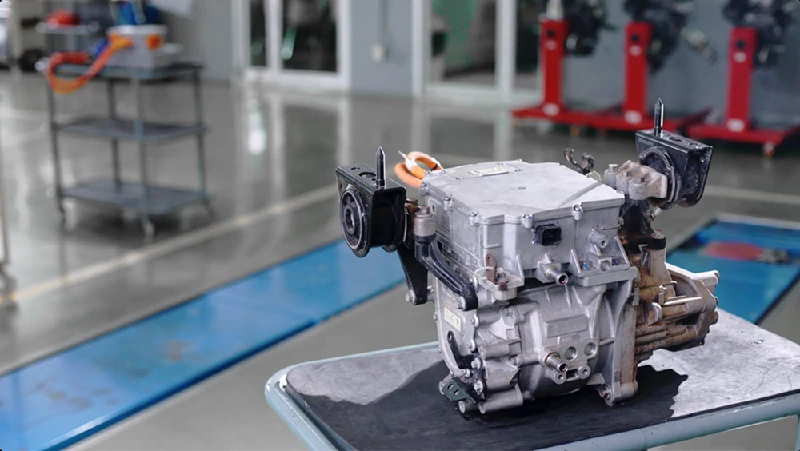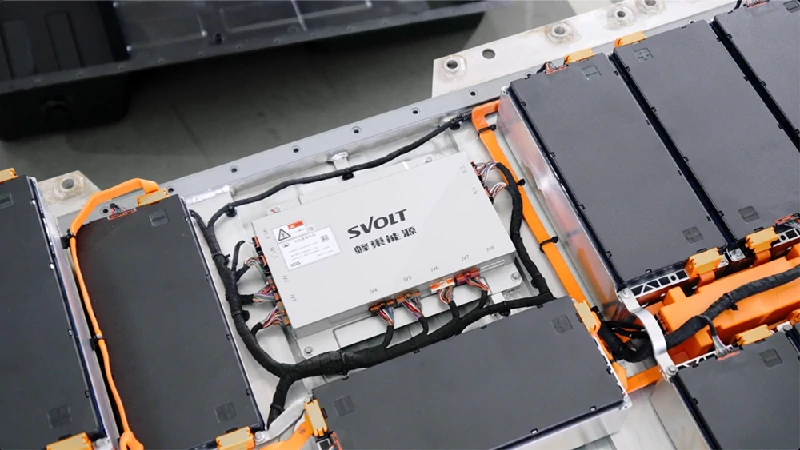
Nowadays, electric cars are steadily increasing in popularity and have become an integral part of many consumers’ lives. It comes with an eye-catching exterior, outstanding performance, and technology that is both advanced and environmentally friendly. It can be said that it truly meets all the needs of the new generation. However, many people may have wondered what’s inside a 100% electric car. Is it different from a car that uses an internal combustion engine?
Today, Great Wall Motor, as a leader in electric vehicles in Thailand, will take everyone through the key components of a 100% electric car, with electric cars having a number of components and parts. As a result, compared to internal combustion cars, the cost of maintenance is several times lower than that of conventional cars. In terms of the key components of electric cars, they are similar. With a car that many people like to play with in childhood, including the motor drives, a rechargeable battery that is comparable to a high-voltage battery used as a power source, and a receiver that is like an electronic control box, along with several additional components added to help enhance various work systems to support more complex work, the electric vehicle consists of 4 important systems: high-voltage electric power systems, drive systems, control systems, and low-voltage electric power systems. In which each system has important equipment as follows:

- A high-voltage electrical system is the core system of all electric cars and consists of the following important main equipment:
- High-Voltage Battery: The storage of electrical energy acts as a fuel tank for a combustion engine. Within the high-voltage battery, there are hundreds of battery cells joined together to store electrical energy for propulsion. Most electric vehicles will use lithium batteries as their main alternative because they have the ability to discharge instantly, and the capacity comes with the right weight. Currently, electric cars use NMC (Lithium Nickel Manganese Cobalt Oxide) cells, which have been developed from LMO (Lithium Manganese Oxide) to provide high power and a lot of energy storage. In addition, it has a long service life and can increase the compression and discharge cycles as well, so it is commonly used in hybrid cars, including electric bicycles.
- Battery Management System (BMS): This is like an artificial intelligence to manage and supervise the operation of every battery. The cells in the system are unified for monitoring and controlling charging. battery discharge, checking the temperature charging status, and the use of high-voltage battery power Including the duty to send important information to other systems. Importantly, modifying the battery’s electrical system to perform the functions as defined.
- Battery Distribution Unit (BDU): It is a device that receives commands from the battery management system (BMS) to control the proper charging or discharging of individual cells. Its internal operation is similar to the electrical relay of an internal combustion vehicle. The battery power supply unit is typically mounted inside the high-voltage battery ball.
- On-Board Charger (OBC): It converts alternating current (AC) to direct current (DC) for recharging back into the battery or supplies high voltage from direct current (DC) to alternating current (AC) to drive the motor. Moreover, the other function is to convert high voltage DC to low voltage DC to recharge the battery back into the 12 volt low voltage battery.
- Electric Vehicle Communication Controller (EVCC): It is a charging processing unit, which is the core component that manages and communicates between the vehicle and the charging station or charging equipment. The EVCC acts as a gateway to exchange information through communication between the external charger and the vehicle ECU, which receives data from the sensors in various parts of the car to be processed.
- High-Voltage Wiring Harness: It serves to carry high-voltage electrical energy to various parts of the vehicle. High-voltage wires are easily observable, which is the orange wire. well-insulated and clearly identifiable warning labels.
- Charging Port: There are various types of electric vehicle charging ports available today, depending on the manufacturer and the country where the electric vehicle is sold, which support both direct current (DC) and alternating current (AC) charging types.
- Safety Switch: It used to cut off the operation of the high-voltage system, which is a device that increases safety in general maintenance work, including in the event of a minor emergency or an accident for the operator. It can also extend the battery life in the event that the car is left for a long time.

2. Drive system is the heart of the electric car and is an important initial force in driving the car. There is an electric motor as an essential component.
- Drive Motor: For the power to drive the car, it receives electrical energy from a high-voltage battery. Another important capability is to generate an electric return to the high-voltage battery while decelerating or descending. In general, electric motors are not very large compared to the performance provided by drive motors. For this reason, electric vehicles therefore have less total weight than combustion vehicles with similar performance. Thus, reducing the limitations of car design and increasing usable space in the car, whether expanding to have more seating space or designing to make the storage compartment bigger.
- A driving control system, in addition to the equipment mentioned above, is another important device. Acts like a control box in a conventional combustion vehicle (ECU), which is
- Vehicle Control Unit (VCU): It is an intelligent machine. It controls and monitors all operating systems in the electric vehicle drive, which receive signals from important sensors, such as the accelerator pedal position, gear position, or necessary information from other control boxes to be processed. And command important systems such as driving control, brake systems, air conditioning systems, and various electrical systems. In addition, it is considered to be the most important part of the power system control unit in a car that has it all.

A low-voltage electric power system is the basic electrical system of a car in general, with a voltage of about 12?14 volts. It is mainly used in the body’s electrical system The details are as follows:
- Passenger comfort systems in an electric car have various facilities. It uses electricity from a 12-volt low-voltage battery, and the convenience system of each car will vary depending on the brand, price, and technology that the manufacturer will put in, such as a voice command system, a multimedia system, electric seats, electric windows, etc.
- The lighting system around the electric cars comes with front and rear lights, and many brands may have cute designs to attract users.
- The security systems of electric cars are also full of safety systems for both drivers and passengers. The main piece of equipment that must be had is an airbag. When the airbags are working, all four doors will be unlocked automatically. Then, the system in the car will make an emergency call to the emergency assistance center. In addition, advanced driver-assistance systems (ADAS) help prevent and reduce risks for safer driving.
Currently, Great Wall Motor has launched two 100% electric cars in Thailand: the ORA Good Cat and the ORA Good Cat GT. ORA Good Cat is very popular among Thai consumers, as proven by its continuous leadership position in the 100% electric vehicle segment. Cumulative sales of more than 3,427 units will be delivered to customers this year, with more than 1,200 ORA Good Cats pending deliveries. It received overwhelming attention on its first day of launch, which made a total of 500 reservations within 58 minutes. In addition, it will begin gradually delivering the first lot on November 11 and prepare to open another 500 reservations with the PREMIERE DEAL campaign between October 28 and November 30.
Great Wall Motor is committed to supporting and driving technology, as well as the electric vehicle industry in Thailand, and is ready to enhance the service experience, including listening to a variety of consumer voices at all times in order to continuously provide maximum satisfaction to users. In line with the mission of Great Wall Motor as a “Global Intelligent Technology Services Company,” as well as focusing on the product that is packed with quality and strong performance to deliver an experience through creating standards in terms of products and services at the same time.


